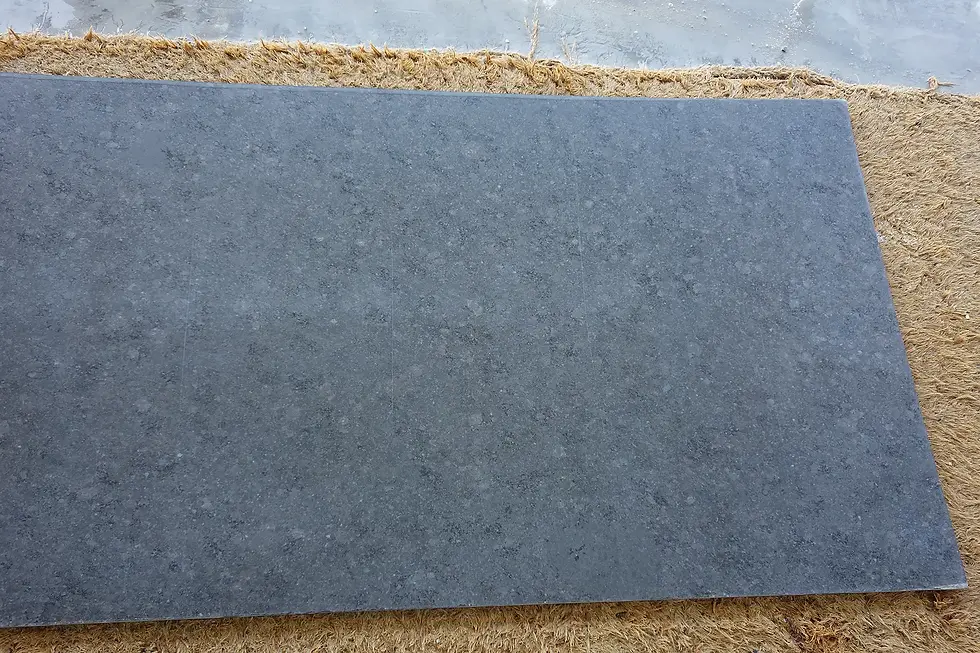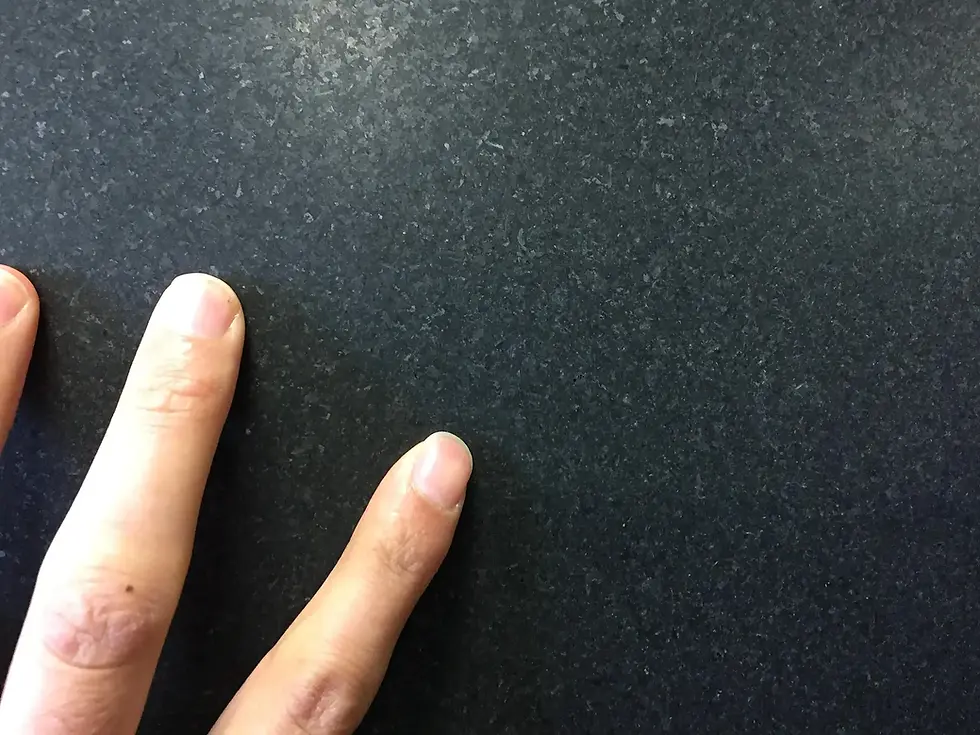Polished vs. Honed Granite: A Technical Insight for Global Stone Buyers
- navinsethi
- Jul 25
- 3 min read
Updated: Jul 26
Granite is one of the most popular and enduring natural stones in the global building materials trade. Known for its structural integrity, aesthetic diversity, and weather resistance, granite is used extensively across residential, commercial, and architectural projects. However, the surface finish of granite—particularly the choice between polished and honed—has a significant impact on the stone’s final performance, appearance, and market suitability.
For international importers, understanding the technical differences between these finishes is critical in ensuring compatibility with client demands, regional design trends, safety norms, and installation conditions.
What Is Polished Granite?
Polished granite undergoes an intensive mechanical process where the stone surface is ground with diamond abrasives up to 3000 grit or more. This high-grit polishing, sometimes combined with resin treatment or color enhancers, results in a mirror-like, reflective finish.

Key Technical Characteristics:
Gloss Level: 85+ GU (Gloss Units), depending on the granite type.
Porosity: Lower due to surface sealing; often enhanced with epoxy resins for a closed-pore finish.
Color and Pattern Enhancement: The polish deepens color tones, increases contrast, and sharpens the visual texture of mineral flecks and veins.
Water Absorption: Reduced, typically <0.5% in most dense varieties.

Ideal Applications:
Interior countertops (kitchen islands, vanity tops)
Wall panels, elevator facings, and reception desks
Sculptures, columns, and interior cladding
High-end flooring in low-traffic zones

Due to its shiny surface, polished granite may become slippery when wet, which limits its use in outdoor or wet environments unless anti-slip treatments are added.
What Is Honed Granite?
Honed granite is produced by stopping the abrasive process at a much earlier stage—typically around 400 to 800 grit. The result is a matte or satin finish, depending on the granite’s mineral composition and grain size.

Key Technical Characteristics:
Gloss Level: 10–30 GU, depending on the density and polish capability of the stone.
Surface Texture: Smooth but not reflective; exhibits a velvety, natural touch.
Porosity: Slightly higher than polished; requires regular sealing, particularly for lighter shades.
Slip Resistance: Significantly higher, especially under wet conditions.

Ideal Applications:
Indoor and outdoor flooring (commercial, residential)
Wall cladding in contemporary and minimalist spaces
Pool decks, spas, and bathrooms
Heavy foot traffic zones where safety is a concern
Honed granite’s understated elegance makes it particularly appealing in modern architectural designs that emphasize subtle textures over glossy finishes.

Technical Comparison: Honed vs. Polished Granite
Property | Polished Granite | Honed Granite |
Appearance | Glossy, high contrast, visually rich | Matte, soft texture, muted tones |
Surface Porosity | Lower (often resin-treated) | Higher (requires more frequent sealing) |
Slip Resistance (COF) | ~0.4 dry, ~0.25 wet (can be slippery) | ~0.6+ wet (more suitable for wet environments) |
Color Depth | Enhanced color and pattern definition | Natural, understated tones |
Maintenance | Easy to clean, less prone to water absorption | Needs regular sealing, especially for light or porous types |
Cost (at source) | Generally higher due to extra processing | Slightly lower but may increase due to sealing maintenance |
Best Use Cases | Decorative interior elements, luxury spaces | Practical surfaces, flooring, outdoor cladding |
Export Considerations for International Buyers
When sourcing honed or polished granite for your inventory, consider the following factors:
1. Finish Integrity:
Ensure that the slabs are uniformly finished, without swirl marks, hazing, or resin buildup (in polished variants). Honed surfaces should have a consistent matte texture across the slab.
The integrity of the stone must remain uncompromised during surface processing. Hairline cracks, edge chips, and resin-filled voids should be clearly documented in slab previews.
3. Moisture Resistance and Surface Sealing:
Especially critical in honed granite, where higher porosity could lead to moisture-related issues post-installation. Pre-treatment with premium sealants or resin-impregnation is advisable before export.
4. Market Demand & Regional Trends:
North America & Europe often prefer honed finishes for modern interior applications.
Middle East & Asian markets may lean toward polished finishes for ornamental use and high-gloss interiors.
Polished surfaces are more susceptible to scratches during transit. Export packaging should include foam layering, edge protectors, moisture barriers, and slab spacers.
Conclusion
The distinction between honed and polished granite is not merely aesthetic—it extends into functionality, safety, and design compatibility. For building material importers, retailers, and project consultants, offering both finishes in core granite colors like Black Galaxy, Absolute Black, Alaska White, and Jhansi Red ensures broader application potential across residential, commercial, and landscape projects.
Understanding the nuances of each finish helps optimize inventory planning, ensure long-term client satisfaction, and reduce post-sale challenges. As natural stone continues to be a cornerstone of architectural design, surface finishing will remain a decisive factor in material selection, application performance, and market success.













Comments